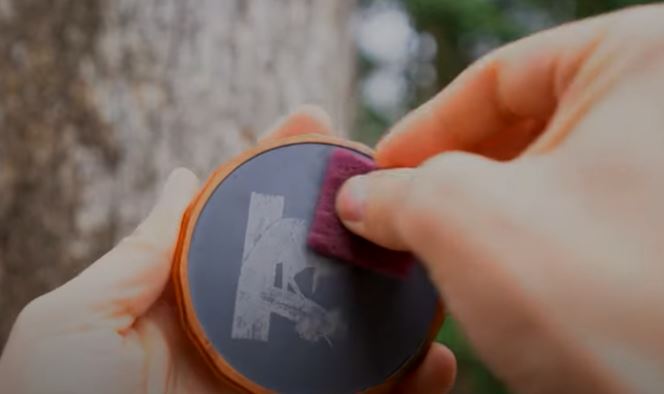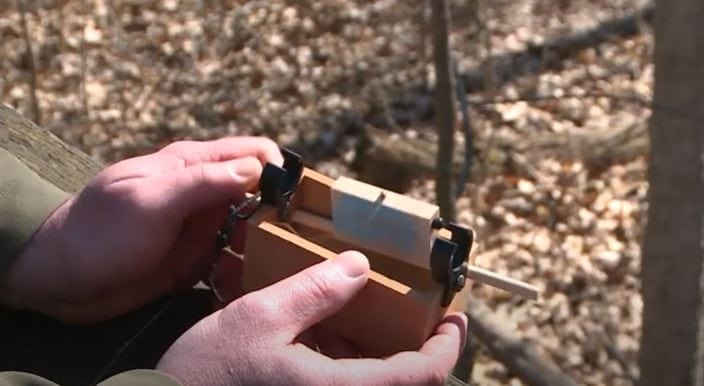How to Clean a Slate Turkey Call
Slate turkey call is a versatile tool for the professional turkey hunter. But, after using two or three weeks, the strength of the slate decreases. The loudness and the accuracy of the slate become light too.
To regain the performance of the calling, you need to clean the slate. Including the slate, you should clean the striker too to get loud calls. Using a lens wipe, fingers, and sandpaper are the simplest way to clean both slate and striker.
In this article, we will discuss the cleaning procedure of a slate call. So, be with us for minutes to know how to clean a slate Turkey call.
How Do You Care for a Slate Call?
If you do not take proper care of a slate call, you will not get an accurate sound. Also, the loudness will damage if you do not maintain the slate surface and the striker both. To keep a slate call accurate, you should follow a few steps –
Rough up the Surface
A brand new slate pot is not ready to produce the accurate call. To generate turkey calls, you need to rough up the surface regularly. You can use sandpaper or a scuff pad. A 220 to 240 grit sandpaper is significant to make a new slate surface rough.
Keep Your Hands Away
Your hands carry a lot of moisture and oil naturally. When you touch the surface of the slate call, it becomes wet or oily. When the surface becomes moist or oily, you will not generate sound. So, you should not touch the surface of the slate call to get the proper sound.
Cover the Slate Pot
You can keep your slate call in a cover. To keep at home, you can cover the slate pot up. And also, you can keep covering the slate pot while going hunting. A cover can keep the slate surface dirt and debris free.
Maintain the Striker
Instead of being clean, the slate surface may fail to generate turkey calls. Thus, you should maintain the striker as well as the pot. When the slate and the striker are clean, it gives the best turkey calls.
How to Clean A Slate Turkey Call

Cleaning a slate turkey call is not complicated. But, you have to know the proper way to clean. When the slate becomes dirt, you will not generate accurate sound. Furthermore, you must clean the tip of the striker too. Otherwise, the sound of the turkey call becomes horrible.
The turkey calling slate becomes dirt for many reasons. Keeping them in the pocket during hunting is the core reason. Besides, the turkey calling slate becomes dirty after using a long time.
To clean a dirty slate, you can use different types of items. Lens wipes, sandpaper, and scouring pads are popular cleaning surfaces. Here we will share how to clean turkey calls with scouring pads. Thus, follow the steps below to learn in detail.
Step 1: Arranging Cleaning Tools
To keep your turkey calling slate, first, you need to arrange a scour pad. Scotch Brite pads are popular to clean turkey-calling pots. However, you can follow the next step after managing a scouring Pad.
Step 2: Attach the Pad on Slate Surface
Yes! You have already arranged the Scotch Brite. Now attach the Scotch Brite to the surface of the slate to rub. You can fold your scouring pad if the surface is small.
Step 3: Rub the Pad Vertically
Well, it is time to start rubbing the slate surface. When you start scouring, move the pad vertically. Press the Scotch Brite until the slate becomes clean. Try to avoid rubbing vertically and horizontally at a time.
Step 4: Rub the Pad Horizontally
After completing the vertical rubbing, you can start horizontally. Remember, random scouring may damage the smoothness of the slate.
Step 5: Cleaning with a Cloth
When you finish the total rubbing procedure, you can wipe the slate. To wipe the dirt, you should use a soft cloth.
Step 6: Rub the Striker Tip
To get the best turkey, you must rub the tip of the striker. By covering the striker tip with a scouring pad, you can spin the striker to clean it.
The above steps can clean your slate turkey calling tool. In the other portion of this article, we will discuss other cleaning procedures.
How to Clean Different Turkey Calling Surfaces
There are several types of turkey calls in the market. Most of them have glass, ceramic, and wood surfaces.
All of the mentioned turkey calls can generate various sounds. But the sound lost its strength and tone. So, you should keep regular maintenance of the surfaces.
Here you can see the different cleaning procedures. And also, you can learn about the suitable tools and materials to clean turkey calls –
Cleaning Glass Surface Turkey Call
The glass surface of the turkey call is naturally suitable. If you need to clean it, you can use a lens wipe. Besides, you can use sandpaper to smoothen the surface. 220 to 240 grit sandpaper is suitable for conditioning the glass surface of the turkey calls.
Cleaning Ceramic Surface Turkey Call
Ceramic surface turkey call produces accurate sound for the turkey hunter. This surface is suitable for conditioning with stone and sandpaper. You can use a conditioning stone to clean scratches from the ceramic surface.
Cleaning Box Turkey Call
Box calls are one of the most valuable tools, Among all the turkey calls. To clean this box call, you can use 120 to 320 grit sandpaper. But, a scouring pad is the best to make the box turkey call clean. Many of the hunters use chalk to smoothen the box call too.
Different Types of Turkey Calls for the Hunters
The manufacturer of the turkey calls creates several types of calls. The procedures of them are also different. Furthermore, construction material and sound quality are also not the same. From this part of the article, you will know a few renowned turkey calls –
Pot Turkey Call

Pot calls are the most popular turkey call for the hunters. Furthermore, these friction calls consist of a pot and a striker. The calling pot includes surfaces made with glass, slate, and ceramic. Some of the pot calls consist of metal over the surface.
Box Turkey Call

Box turkey calls are expensive and made with wood surfaces. Additionally, the tools consist of a traditionally shaped box and a thin edge. With a wooden lid, you can strike to generate turkey calls.
Mouth Turkey Call

The mouth turkey calls are the best choice for the beginner. This mouth call includes a plastic frame to generate calls. Blowing with the mouth air, you can deliver turkey calls from it. Check here for the guide on how to clean it.
Push/Pull Turkey Call

Push and pull turkey calls are the first choice for the professional hunter. This turkey call consists of wood and spring to push. By pushing a spring, you can produce accurate turkey calls.
Do You Sand a Slate Turkey Call?
You can sand a slate turkey call with sandpaper. Besides, you can use sanding stone to sand a slate turkey call. Also, sandpaper is the best tool to remove dust from the slate surface.
If you get oil on the slate surface, you can use a scrubbing pad. Otherwise, a 120 to 320 grit sandpaper performs well on a slate surface. We prefer 220 grit sandpaper most to sand a slate turkey call.
Can You Use Sandpaper on a Slate Call?
The green scouring pad is a tool that can clean various turkey calls. Besides, you can use sandpaper to clean a turkey calling tool. But, you can use sandpaper to sand a slate surface. Also, sandpaper can clean slate call surfaces more than other items.
Regular maintenance is essential to get better performance from slate calls. But, you should maintain the tip of the striker with the slate call surface. Then, you can get your desired output from an old slate turkey call.
Conclusion
Keeping turkey calls clean can be the game-changer during turkey hunting. Remember, a dirty turkey slate does not produce an accurate turkey call. So, you should clean your turkey call before hunting.
We’ve tried to provide all the information you may need to maintain this turkey hunting accessory. After a careful reading, you may by now know how to clean a slate turkey call. Follow those steps, and you’ll end up with a clean turkey call. So, what are you waiting for? Go and hunt your next turkey!

